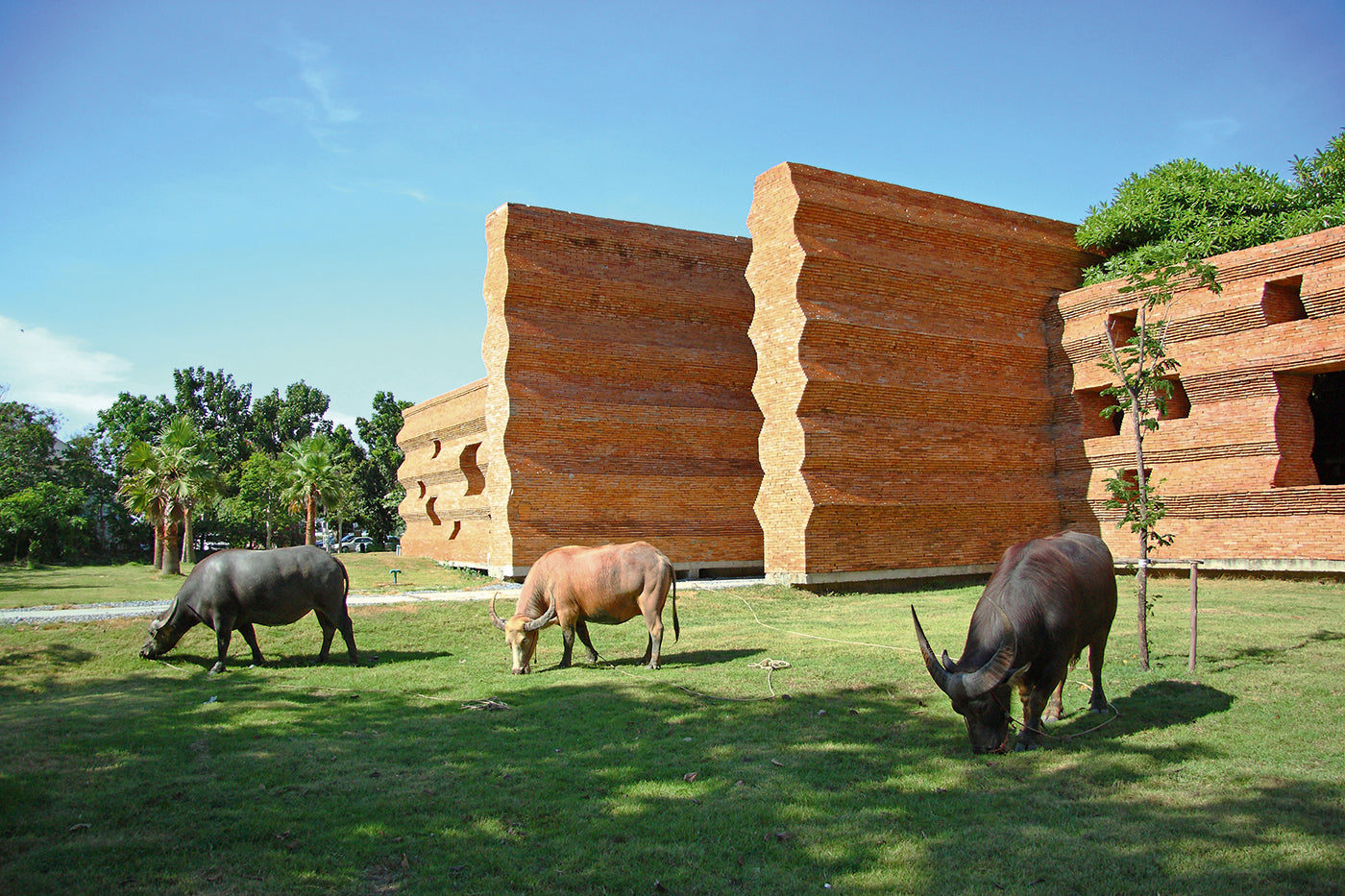
The Harmonizing Architecture of Thailand's Countryside
Writer Tracy Lynn Chemaly delves into one of the most aspirational studios from Beyond The West
Thailand-based architect Boonserm Premthada understands the value of patience. Although having founded Bangkok Project Studio in 2003, a year after graduating with a Master’s degree in Architecture from Chulalongkorn University, his first projects were not completed until 2011. Since then he has achieved worldwide recognition for his approach to the surroundings. He was one of the winners of the 2018 Global Award for Sustainable Architecture under the patronage of UNESCO. The following year he received the Royal Academy Dorfman Award for his sensitivity to local contexts.
Although based in Bangkok, Premthada is not interested in working within the congested city sprawl, he focuses on Thailand’s countryside. “The rural area needs architects to create opportunities and an economy so that people do not have to relocate and struggle in cities,” he explains. “I prefer to work in less developed places because I know that my architecture is meaningful to people there.” Commissioning artisans from the small towns in which he works, he instills every project with traditional local knowledge.
In this way, he attempts to unlearn what he was taught during his studies. “What I learned at university are rules and formulas, but I have found that they do not work everywhere. What I have learned from villagers is necessity and priority. I have learned about humanness, human instincts, and that we should aim for natural learning—the simple way.”

The towering brick walls of the Kantana Institute have a distinctive wave pattern in cross-section. They are also staggeringly thick. The masonry is punctuated at regular intervals with apertures, which serve to ventilate the spaces between the inner and outer skins of the edifice while providing quiet enclaves for sitting and relaxing. (Photo: Bangkok Project Studio, Beyond The West)
Premthada uses endemic materials and traditional crafts to respect his country’s innate wisdom. He founded Bangkok Project Studio to “prove a point that there should and must be other ways of designing for different cultures, geographies, and climates.” He sees many property owners swayed by trends they see in the “Western” world. “But they are living in Thailand, and they are limited by budget, time, and the availability of skilled labor,” he says of the reality. “My motivation is, therefore, to help owners see things from a different perspective, to resolve misunderstandings, and counter the lack of self-identity.”
The Kantana Film and Animation Institute in Nakhon Pathom Province embodies this idea of celebrating a unique Thai identity. By using 600,000 handmade bricks on the school’s eight-meter-high (26-foot-high) walls, the project prevented a local brick company from going out of business and it highlighted the potential of a simple, locally available material.
“I specifically select ordinary overlooked materials because I want to enhance their value with design,” Premthada explains. Inspired by local houses made of wood, he used cheap plywood reinforced with steel for the structure of The Wine Ayutthaya, a wine bar and eatery on the banks of a river in what was formerly the capital of the Kingdom of Siam. It has four multilevel platforms and five spiral staircases that create visual intrigue amid the towering trees on site.

At the Wine Ayutthaya, the use of plywood for construction transforms the perception of a material that is typically used in furniture making. (Photo: Bangkok Project Studio, Beyond The West)
Sensory experiences are a high priority for the studio's projects, and the choice of material and the way they are used stimulates unexpected perceptions. Premthada finds ways to develop what he calls the “poetics in architecture” by making abstract ideas concrete. At The Wine Ayutthaya, the smell of plywood and wine, and one’s movement up the winding staircases to gain different views, are part of the ingrained memory of a visit.
Sound (or the lack of) has become another such mechanism he employs—a focus Premthada draws from his experience of being born with just 30% auditory ability in one ear. “Humans principally rely on one sense of perception: sight. But when you close your eyes, you wake up other senses,” he explains of atmospheric architecture, which heightens the awareness of one's surroundings. The courtyards at Kantana school encourage interaction, humanizing the educational institute. The sensory experience in this environment is purposefully considered; tall brick walls limit visual stimuli, thus amplifying the sound, smell, and temperature.
Blurring the lines between the built and natural environment is a signature approach for Bangkok Studio Project. Premthada describes his designs as “Borderlessness.” He avoids lines between urban landscape, architecture, and interior, preferring a blended integration of the total environment. This approach is particularly evident in a project currently underway in Samut Prakan. The Mangrove Learning Centre by the Thai Red Cross Society is a rehabilitation center for the elderly with a light footprint, among the trees of a mangrove forest.

The single-volume space measures 121 square meters (1,296 square feet) and is an impressive 9 meters (29.5 feet) in height. In a fun twist, the spiral staircases are reminiscent of corkscrews. (Photo: Bangkok Project Studio, Beyond The West)
Having set out to create meaningful architecture, it appears that the patience with which Premthada embarked on his career is paying off. A portfolio of memorable places, constructed with local materials, traditional skills, and innovative adaptations, is serving a multitude of purposes—for humans, nature, and animals.
Discover architectural expressions from around the world that focus on a localized approach to design and its surroundings through Beyond The West.


